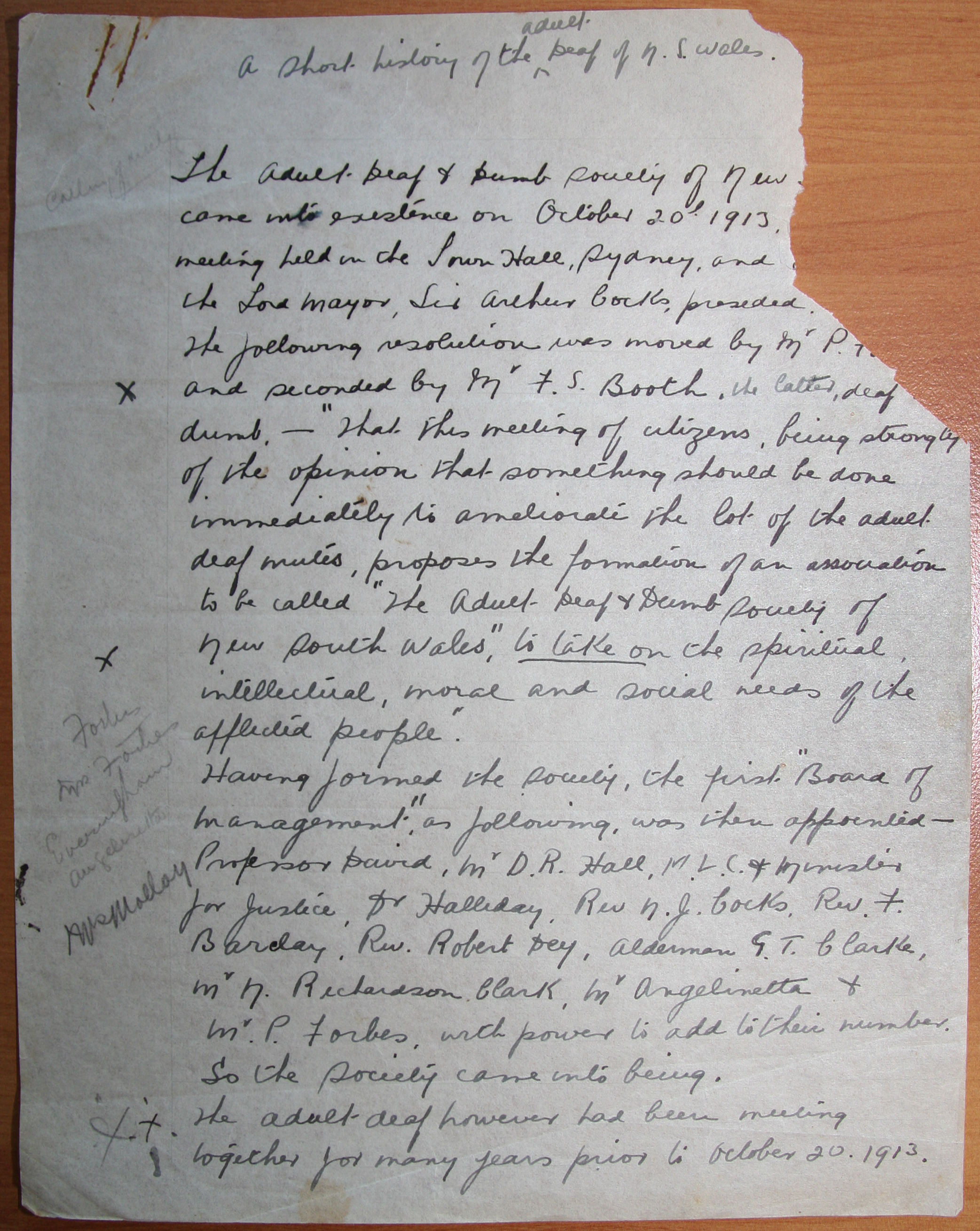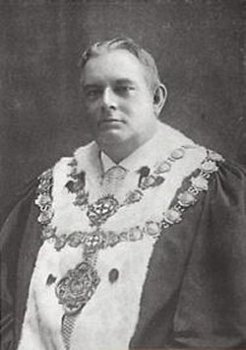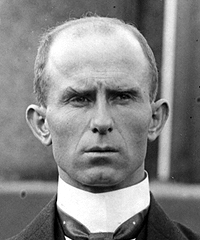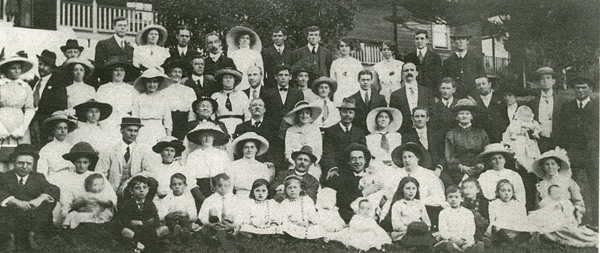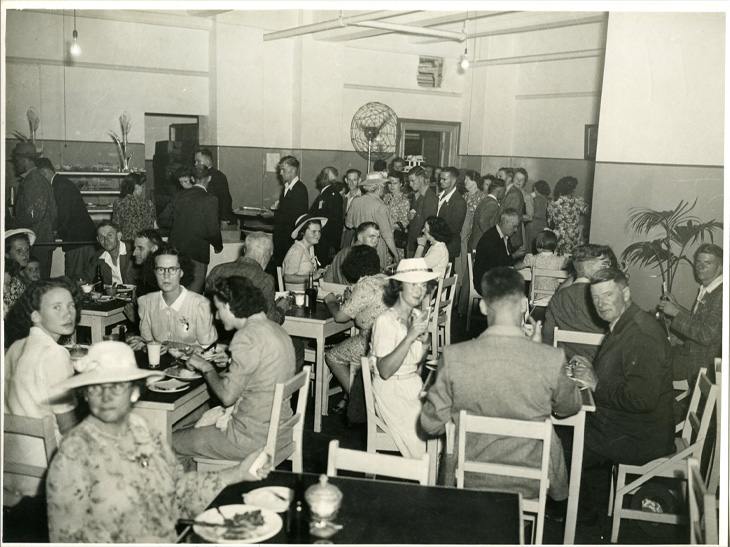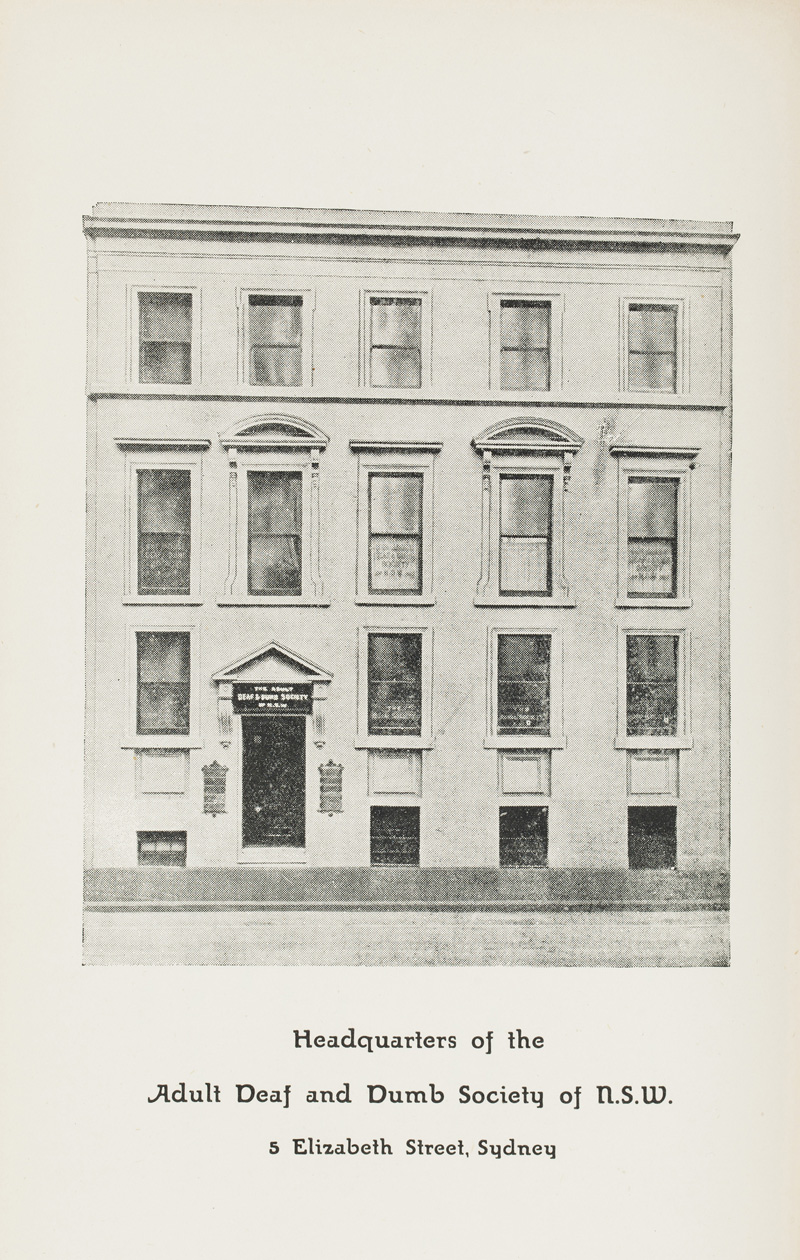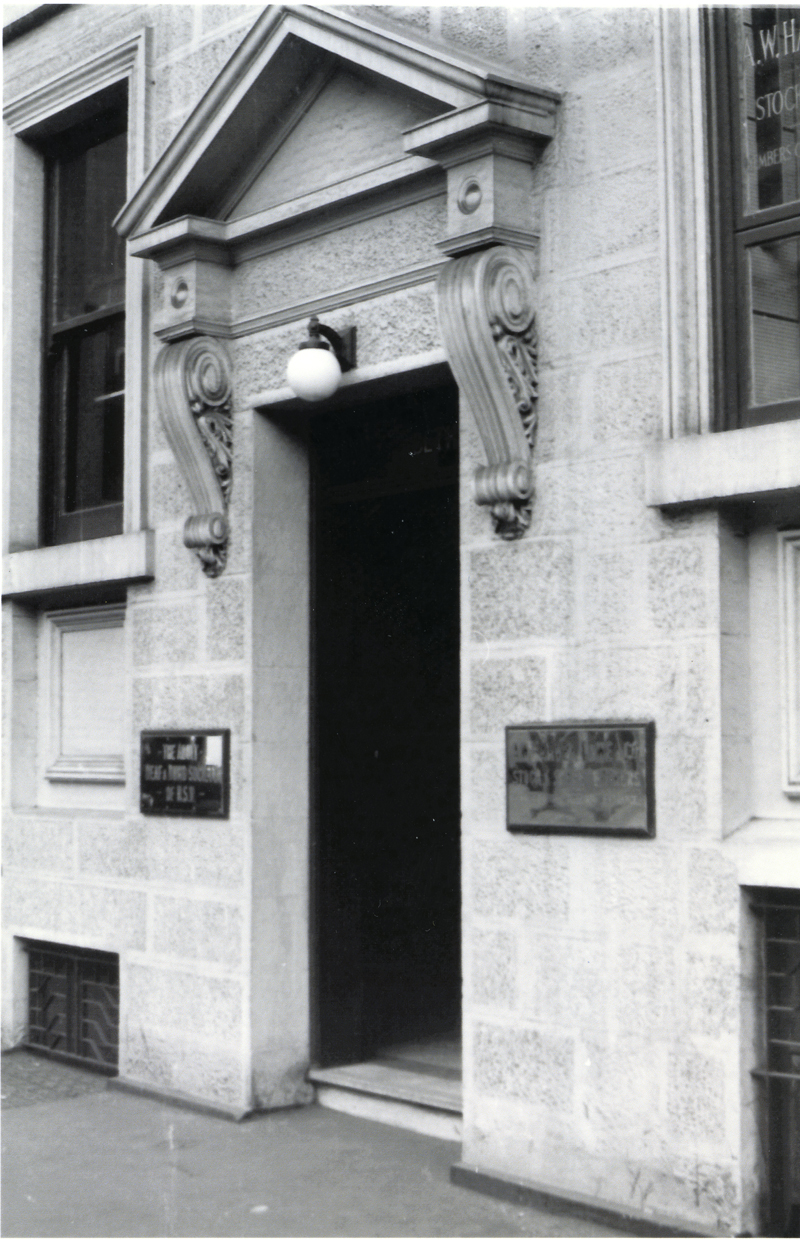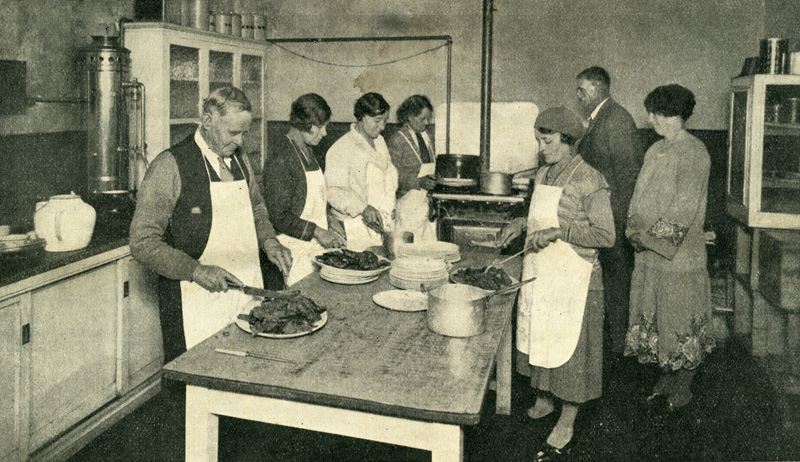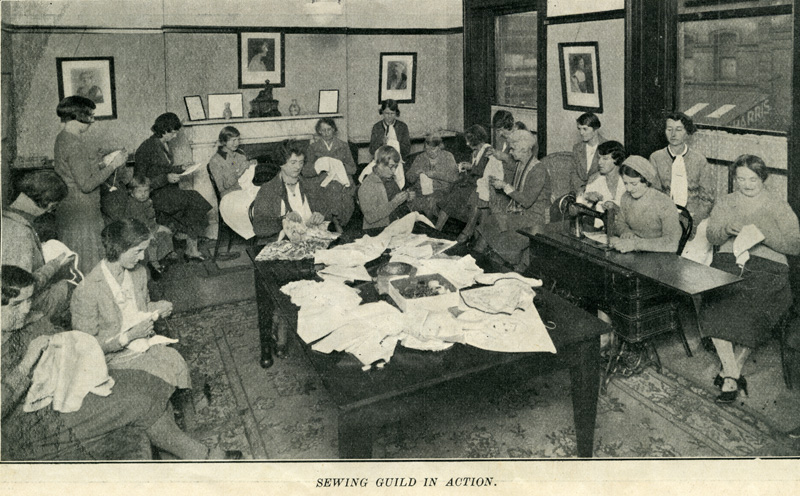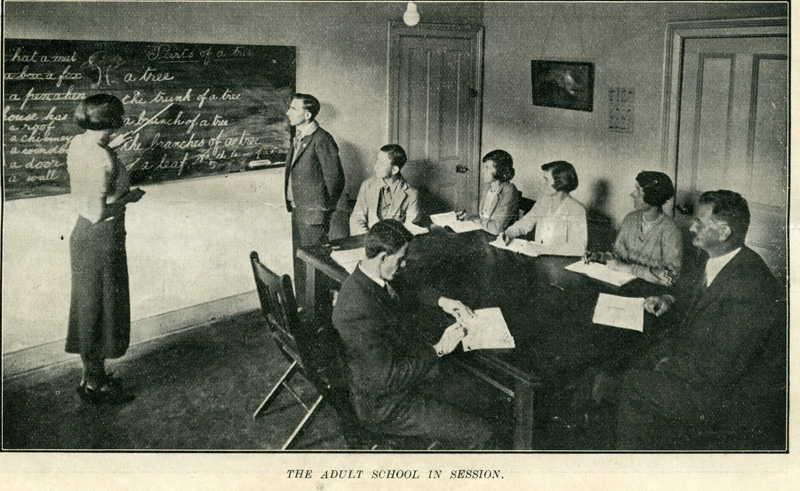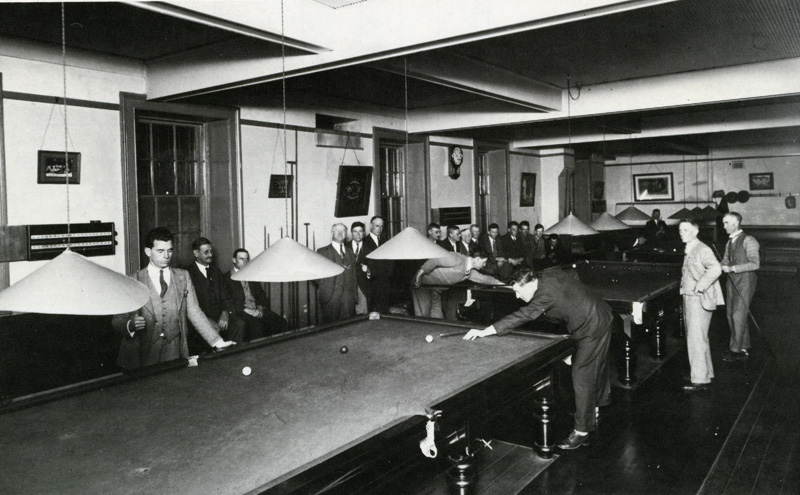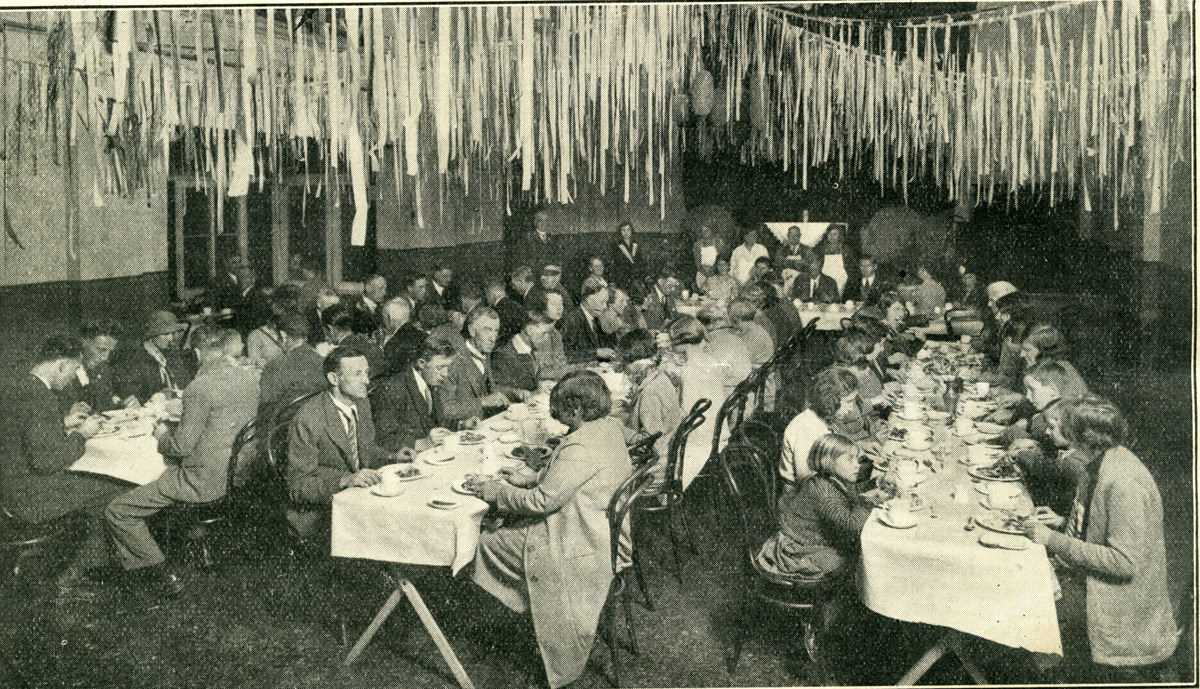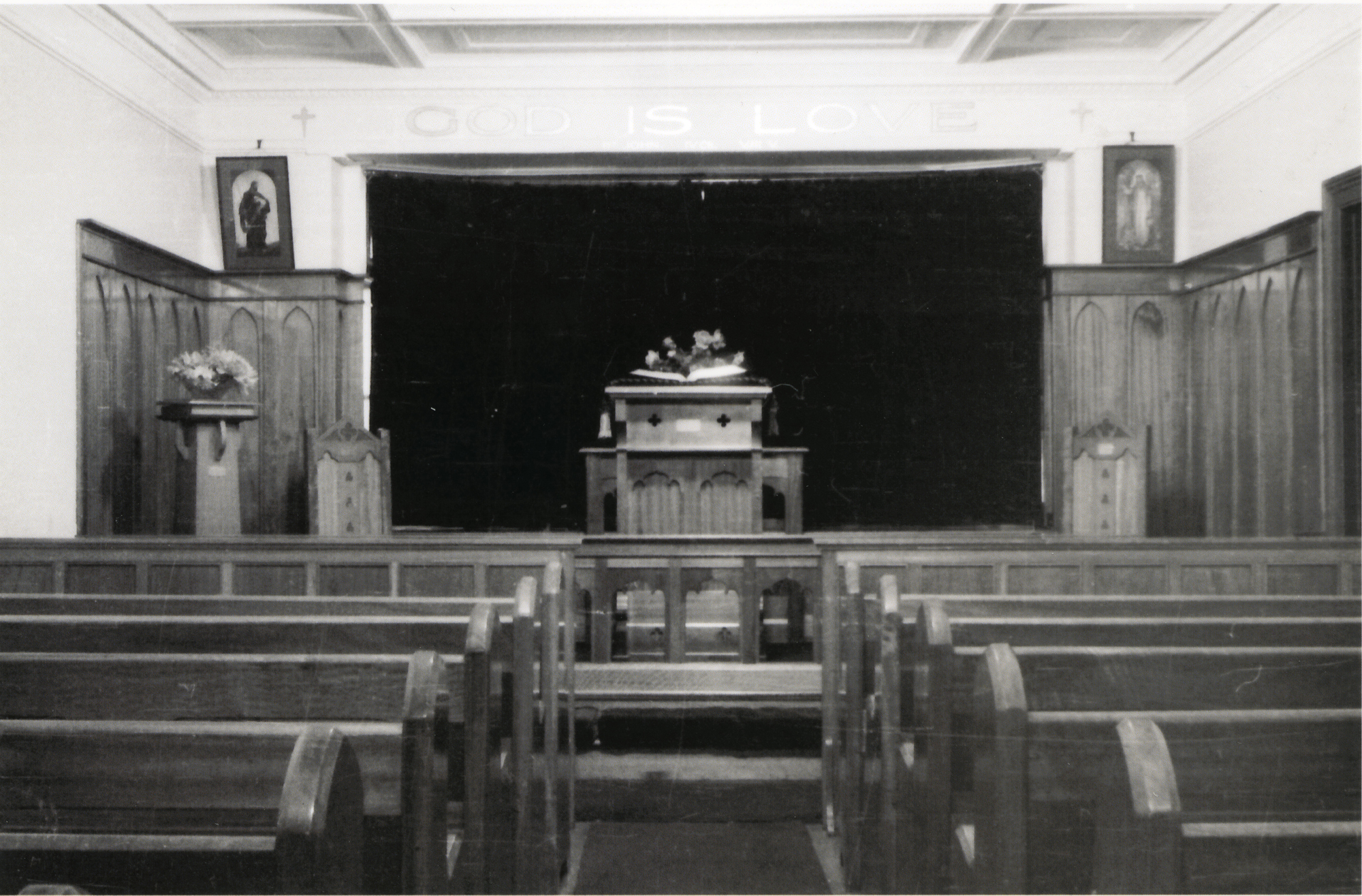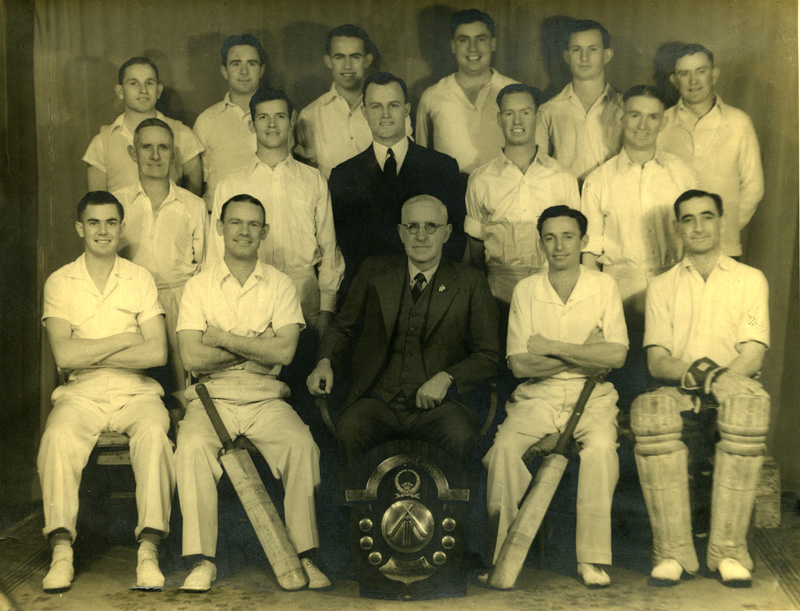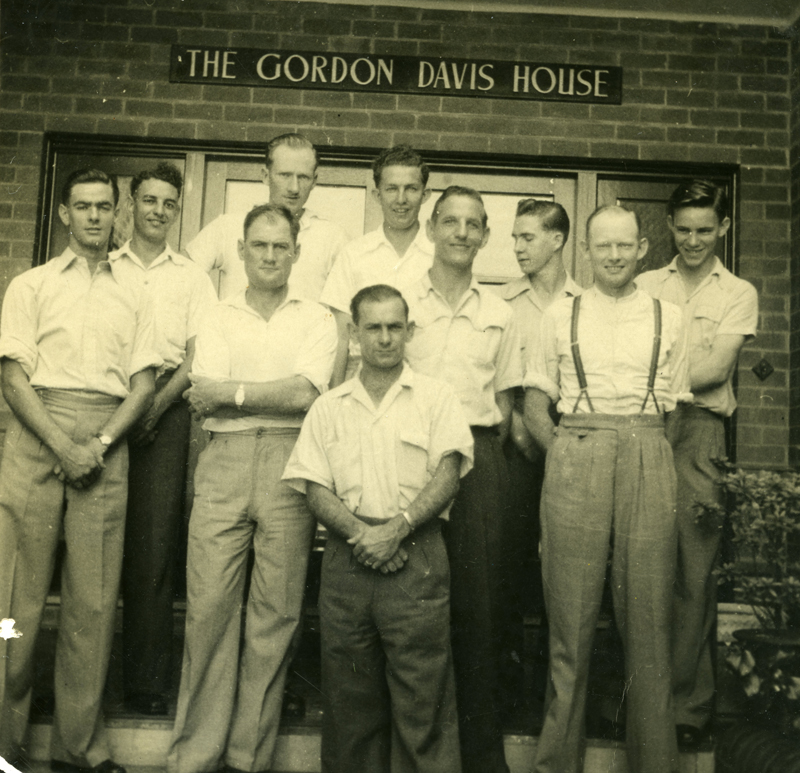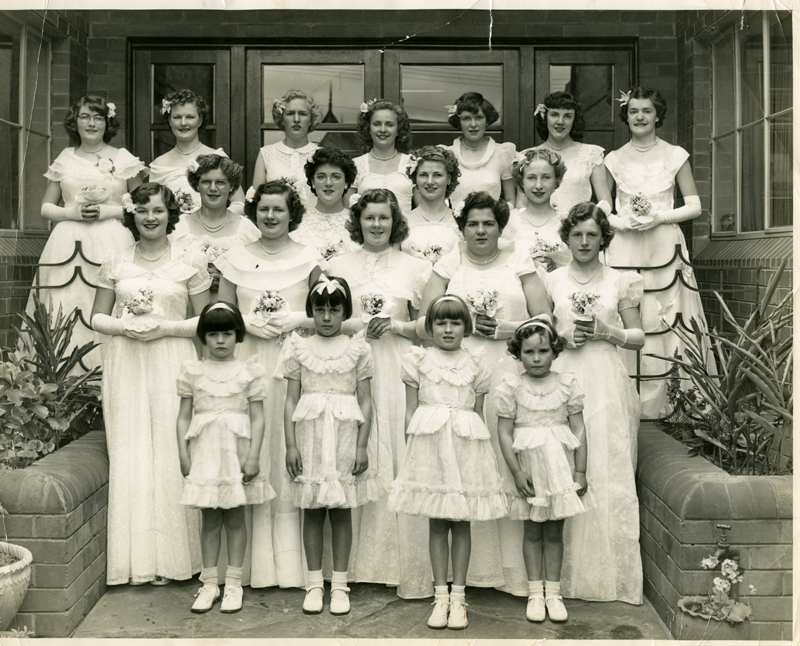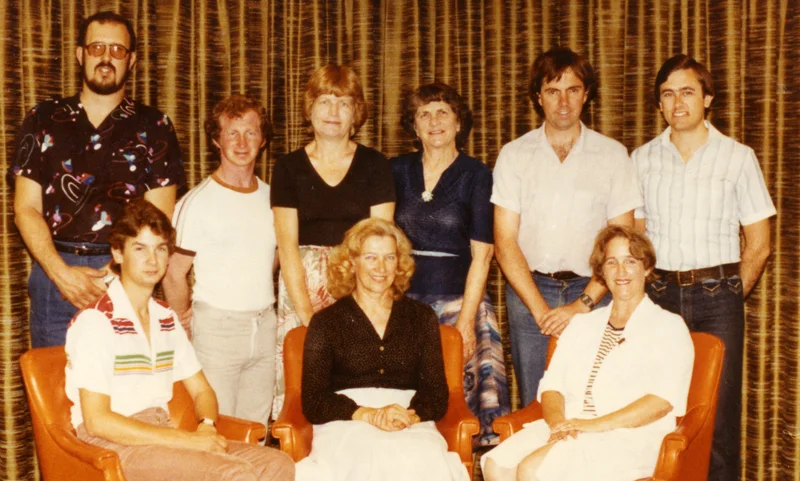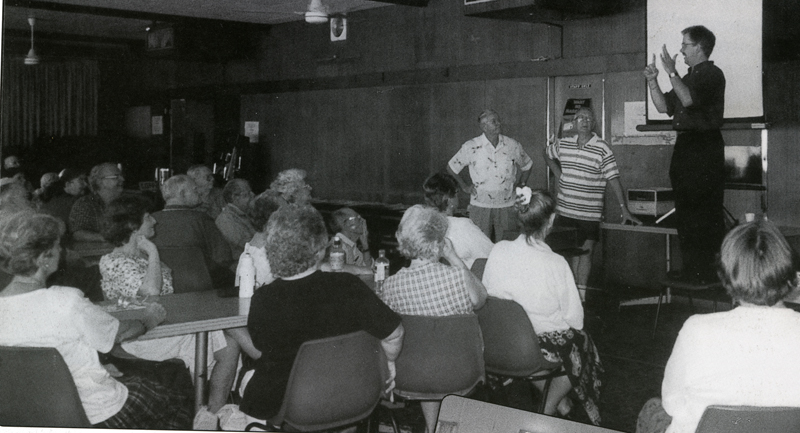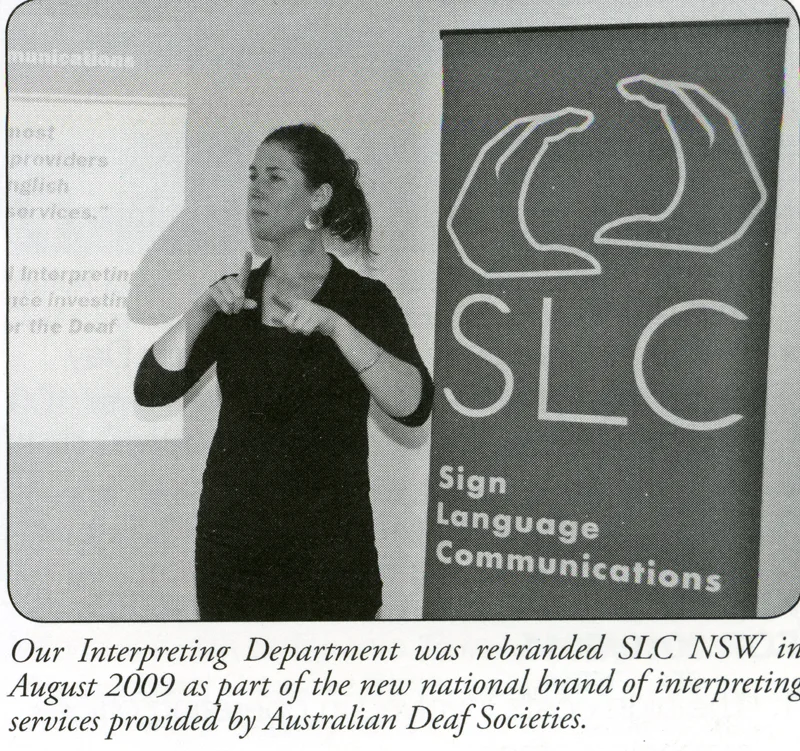




























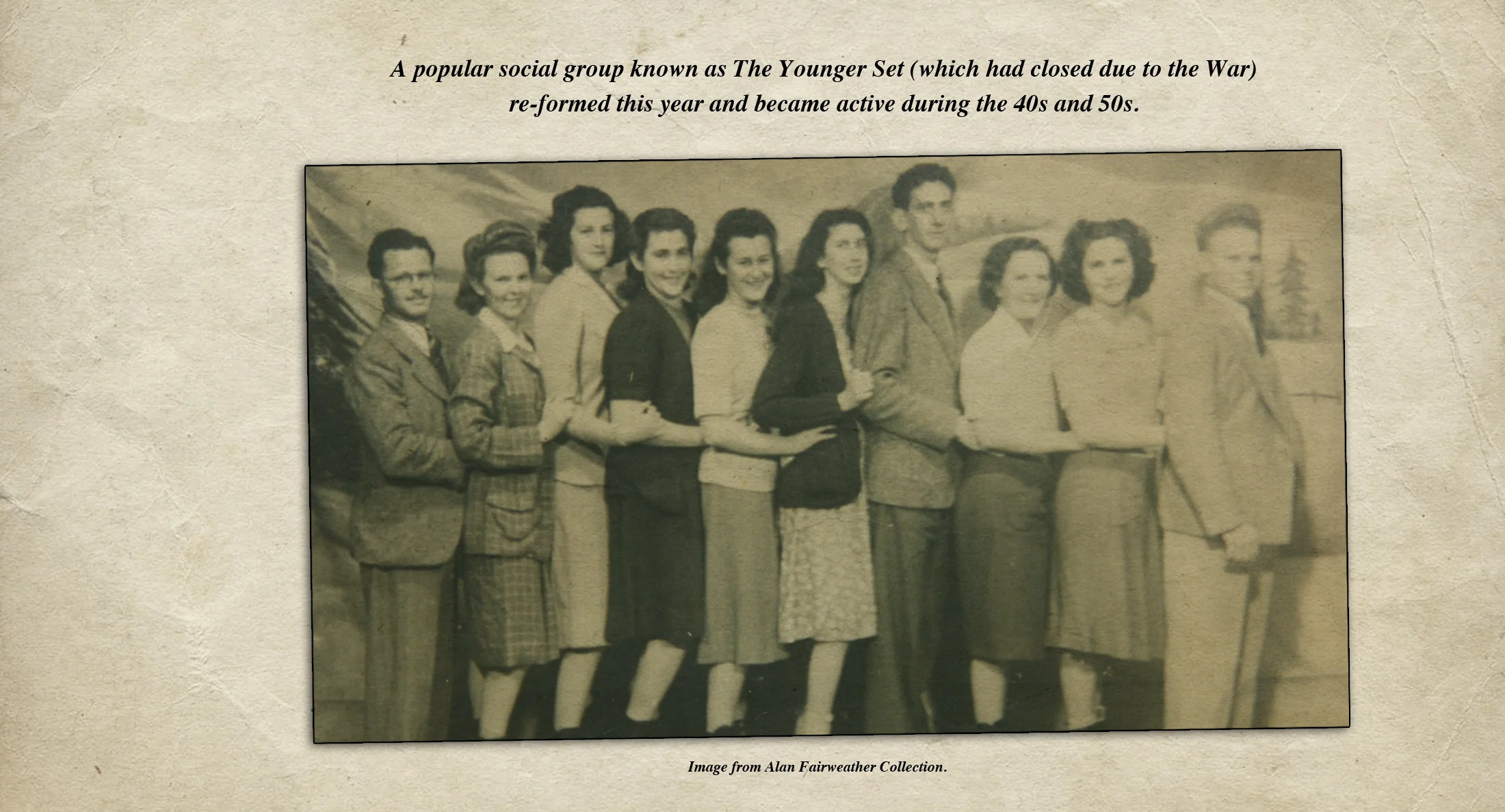






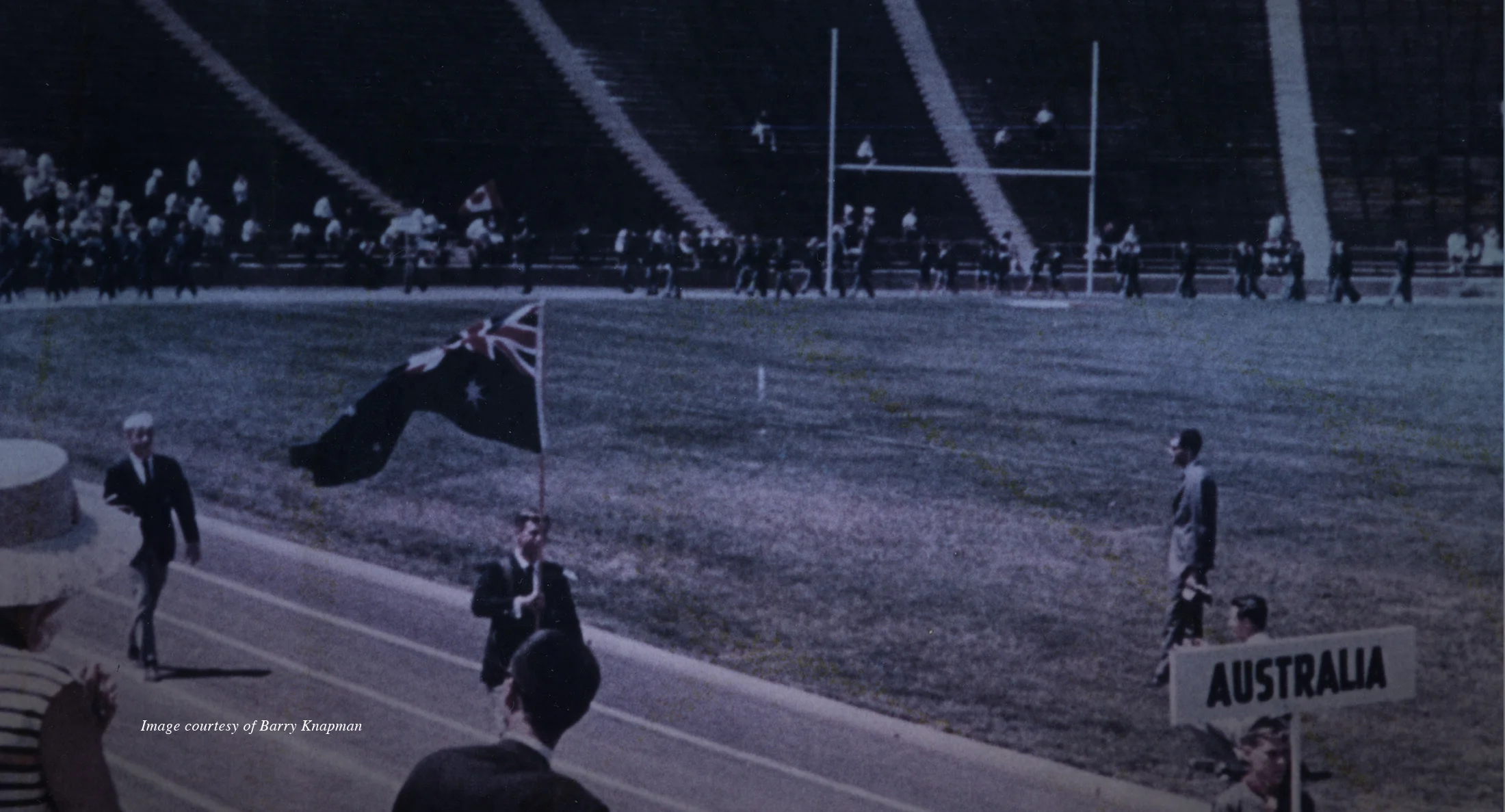





















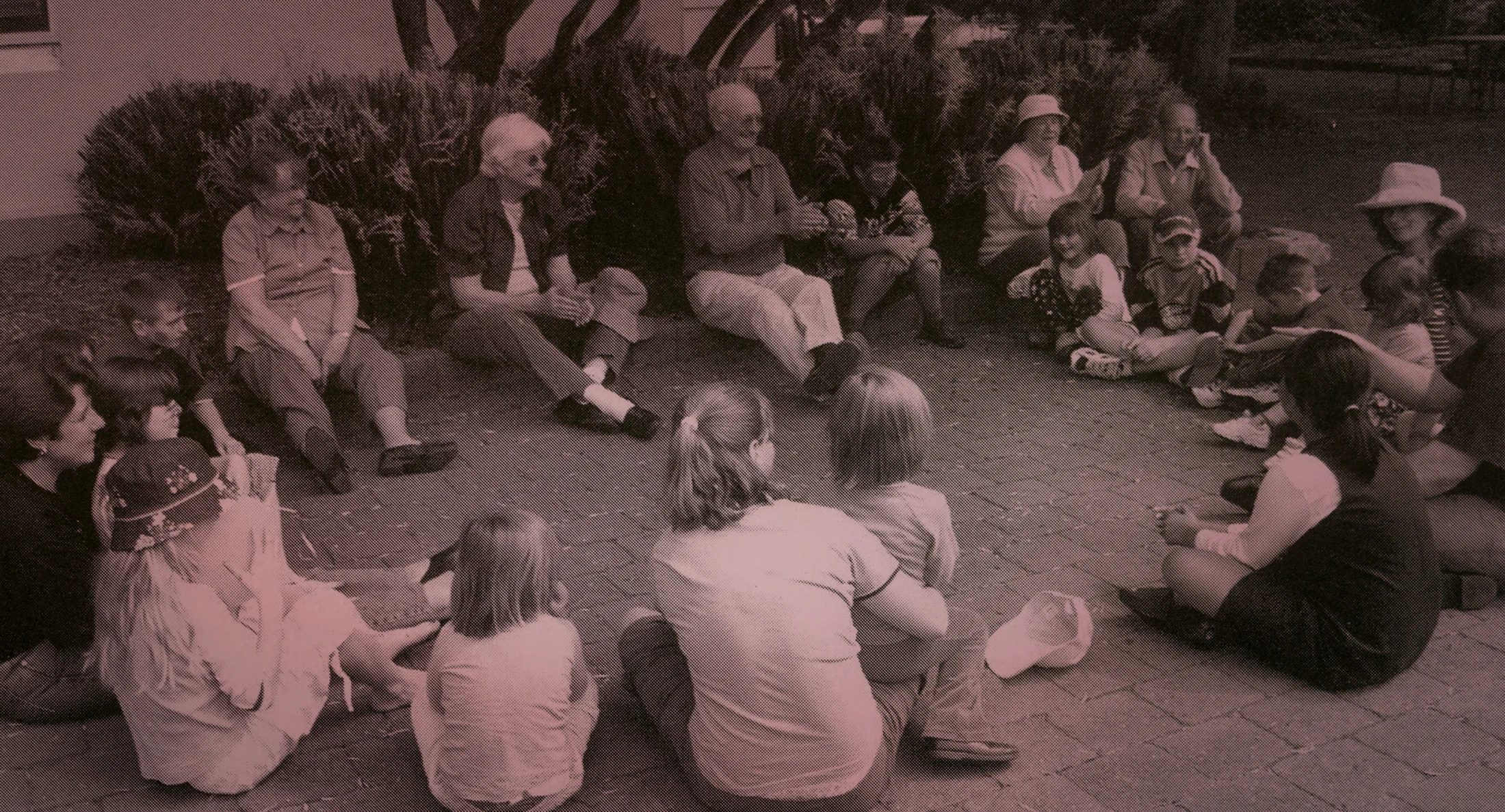




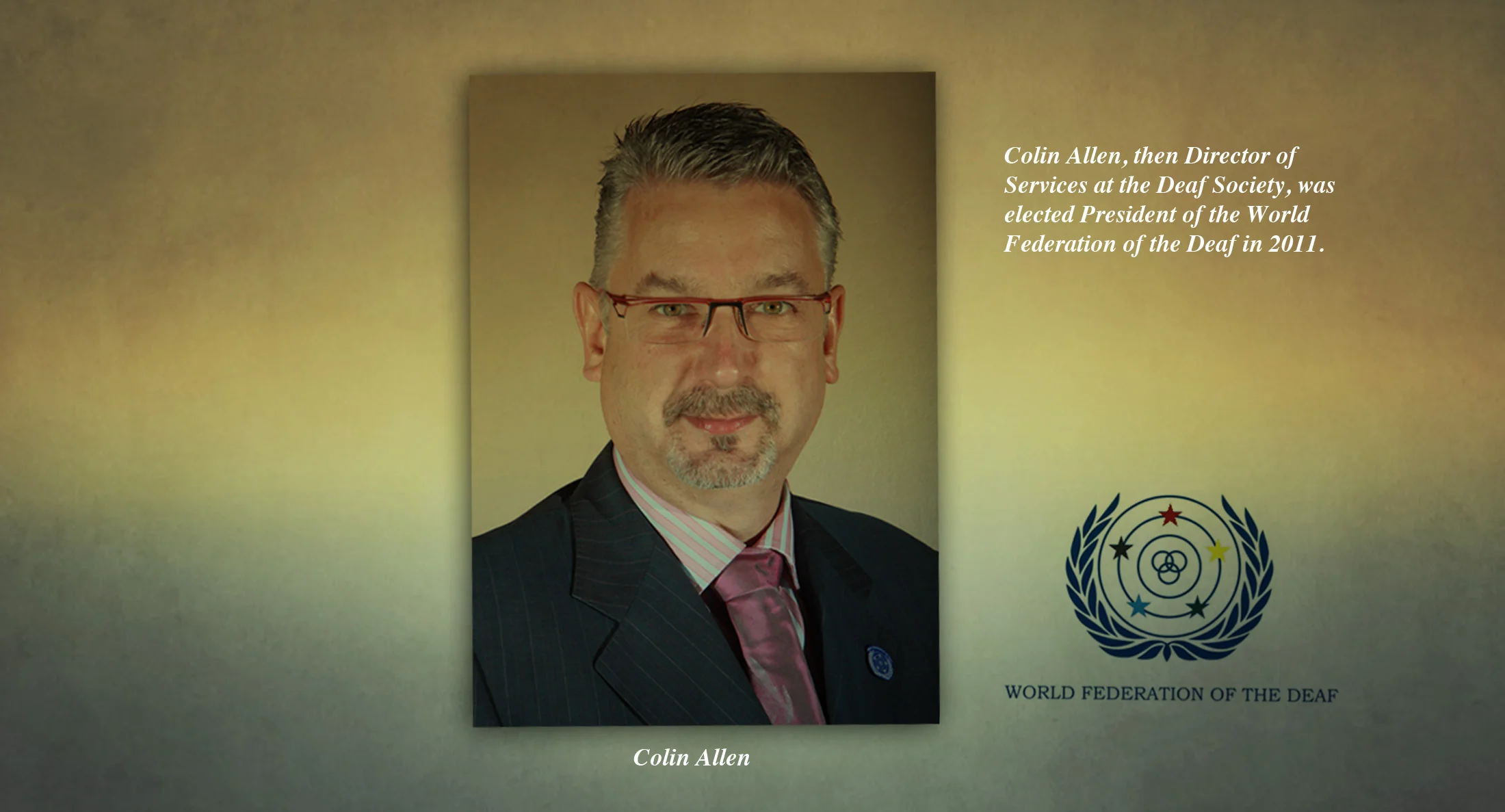


TIMELINE
TIMELINE
Pre 1788
Before white settlement
The beginning of white settlement is not the beginning of deaf history in Australia.
Deaf people are present in every culture and society, including indigenous Australian nations. Many Australian Aboriginal groups have had well-developed sign systems. These sign systems are used in situations where speaking is forbidden or difficult – such as mourning periods, hunting, or communication between different language groups. They may have also been used with Aboriginal deaf people.

1790s
Deaf people in Colonial NSW
1790s
Deaf people in Colonial NSW
Elizabeth (Betty) Steel
The emergence of deaf people in Colonial NSW began with convicts.
Betty Steel arrived on the Second Fleet as a convict in 1790.
She is the first recorded European-born deaf person to arrive in Australia.
Image courtesy of the Sydney Town Hall Collection

1792
Native-born deaf people
1792
Native-born deaf people

1819
Deaf Convicts
1819
Deaf Convicts

1825
Free Settlers
1825
Free Settlers

1840-1860
Beginnings of Deaf Education
1840-1860
Beginnings of Deaf Education

1860
First School for Deaf Children
1860
First School for Deaf Children
Thomas Pattison
Thomas Pattison, a deaf Scot, arrived in 1858 and began teaching deaf children at his residence at 152 Liverpool St in Sydney on 22nd October 1860. He started with 11 deaf pupils.
First deaf religious service
On 25th October 1860 Thomas Pattison also arranged a religious service for deaf people at his house.
Sydney Morning Herald, 15th October 1860
Thomas Pattison a deaf Scot
Photo courtesy of the Royal Institute for Deaf and Blind Children.
368 Castlereagh Street, the first Home of NSW Institution for the Deaf and Dumb.
Photo courtesy of the Royal Institute for Deaf and Blind Children.

1862
A growing community
1862
A growing community
The numbers of deaf children steadily increased, leading to the beginnings of a Deaf community in NSW.
A report in 1862 showed that there were over 50 deaf children in Sydney alone, and numbers grew in the second half of the nineteenth Century.
Thomas Pattison’s school became the NSW Institution for the Deaf and Dumb and the Blind. This period saw the rise of leaders in the community such as Fletcher Booth, and allies of the Community such as Samuel Watson, the Superintendent of the Institution. A national Deaf Community began to develop through interstate contacts and travel.
The Empire, 10th December 1860

Late 1800s
Aboriginal deaf people
Late 1800s
Aboriginal deaf people

1874
Evening classes for Deaf adults
1874
Evening classes for Deaf adults

1875
Catholic Institution for the Deaf and Dumb
1875
Catholic Institution for the Deaf and Dumb

1893
The Deaf Community Grows
1893
The Deaf Community Grows
The First Club for Deaf Adults is Formed
The Deaf and Dumb Young Men’s Mutual Improvement Society was formed, with Fletcher Booth as the founding member and its Missioner
Image courtesy of State Library of NSW, Picture Collection ML2474
Deaf people gathered regularly in the school rooms of the original St Stephen’s Church in Rose Street Newtown between 1893 and 1902.
Fletcher Booth
Map of Newtown-Darlington

1895
Earliest Interstate Cricket Carnival
1895
Earliest Interstate Cricket Carnival

1901
Adult Deaf Mute Association formed
1901
Adult Deaf Mute Association formed

1902
A place to call home
1902
A place to call home
A place to call home
In June 1902 the Adult Deaf Institute was opened on the grounds of the NSW Institution for the Deaf, Dumb and the Blind, and Fletcher Booth was appointed as its Missioner. His wife Laura was also very active in Deaf Community organisations
The Adult Deaf Mute Association was responsible for managing the Adult Deaf Institute.
Fletcher Booth's wife Laura is still remembered as a tireless worker.

1906
Deaf community publications
1906
Deaf community publications
The iconic deaf community publication
'The Silent Messenger' was first distributed in 1906.
It was then renamed “The NSW Deaf Journal” from 1909, but lapsed after 1912.
It was resurrected as “The Silent Messenger” once again from 1929.

1910
Growing tensions
1910
Growing tensions

1913
Establishment of the Deaf Society
1913
Establishment of the Deaf Society
IMAGES ABOVE FROM LEFT TO RIGHT
1. Sydney Town Hall interior
2. Extract from minutes of first meeting Image in 2012 Annual Report
3. Lord Mayor Arthur Cocks Image courtesy of City of Sydney Archives
4. Photo of First President, Mr David R Hall MLC, Minister for Justice
5. Picnic at Clifton Gardens, Sydney Harbour on 14 October 1913
The Sydney
Morning Herald, 21 October 1913, p. 10.

1914
Protestant Hall, Castlereagh St
1914
Protestant Hall, Castlereagh St

1917
Daking House
1917
Daking House
City of Sydney - Deaf Locations

1922
St Gabriel’s School for Deaf Boys
1922
St Gabriel’s School for Deaf Boys

1927
Elizabeth House
1927
Elizabeth House
Images of Elizabeth House

1928
Professional staff
1928
Professional staff
Deaf group at Balmoral Beach 1920s
From left to right
Back Row: Dot Loader, Valerie Hole, Gladys Barron, Laura Booth, Marion Hersee, Isabella Winn, Ivy Lansdown, Dora Rider and Ivy Sacker
Front Row: Alfred Power, Norman McNiven, Ernest Quinnell, Fletcher Booth, Herbert Hersee, Stanley Winn, Arthur O’Callaghan, Albert Hole and Frank Sacker
The Deaf Society moved to Elizabeth House in 1928

1929
Turbulent Times
1929
Turbulent Times
The Breakaway
The turbulent years of the Great Depression were also revolutionary times in the Deaf Community of NSW. This was obvious when there was a breakaway organisation from the Deaf Society.
In 1929, many deaf people were feeling increasingly dissatisfied with the paternalistic attitudes of the hearing leadership of the Deaf Society. This led to the formation of a breakaway organisation - the NSW Association of Deaf and Dumb Citizens. The Association’s periodical,
'The Deaf Advocate', was edited by Fletcher Booth and Ernest Quinnell and published the writings of radical deaf people from other Australian states as well.
The story of the breakaway is a complex one of power struggles against a background of social unrest.
Sydney Morning Herald, 9 May 1929, p. 11

1930
The new organisation grows
1930
The new organisation grows
The breakaway Association began publishing its own magazine,
'The Deaf Advocate'.
“…by the Deaf & Dumb for the Deaf & Dumb”
'The Deaf Advocate' Editor
Fletcher Booth
'The Deaf Advocate' Editor
Ernest Quinnell

1934
The Charitable Collections Act
1934
The Charitable Collections Act

1936
Blackall House
1936
Blackall House

1937
The merger
1937
The merger

1939
The outbreak of World War II
1939
The outbreak of World War II
The outbreak of World War II affected the Deaf Community in many ways.
“The present war has transformed the position with regard to employment of the deaf.”
Deaf men were disqualified from active service in the army, but they took on many of the jobs at home which were previously held by hearing men. Deaf women also had broader employment opportunities. The Manpower program placed them in jobs to support the war effort, such as ammunition factories. The social and sporting activities of the Deaf community were restricted during wartime (as they were for everyone else), but this difficult period gave many deaf people opportunities for work and greater independence.
Annual Report, 1941-42, p. 4.
Annual Report, 1941-42, p. 5.

1942
The Younger Set
1942
The Younger Set
Sport in the 1940s

1949
Gordon-Davis House
1949
Gordon-Davis House
Gordon-Davis House
'Gordon-Davis House’ was opened at Stanmore to provide housing for deaf people. It was a popular hostel for deaf people, both young and old.

1951
Alfred Lonsdale House
1951
Alfred Lonsdale House

1953
Social gathering in the 1950s
1953
Social gathering in the 1950s
Holiday house in Newcastle
James Laskie Holiday Home at Belmont near Newcastle was built by the Society to provide a holiday house for deaf people, and opened in early 1953. It was very popular with deaf people until it was sold in 1958.
James Laskie Holiday Home
Deaf General Committee
The Society’s Board helped to re-establish the Deaf General Committee.
The Deaf General Committee had begun as the ‘Deaf Mute Committee’ in 1916, and changed its name to the ‘General Committee’ (1924) and then the ‘Deaf General Committee’ (1928). The Deaf General Committee was dissolved in 1938, re-formed in 1945, then lapsed in 1948 for several years until resurrected in 1953. It ran for another 31 years until 1986.
The Silent Messenger, 1955
Social life: A Deaf Community picnic event in the 1950s

1954
Dey House
1954
Dey House
Dey House was built next to Gordon-Davis House at Stanmore,
to provide further accommodation for deaf people.

1959
Entertainment
1959
Entertainment
The Oral Division
The Oral Division within the Society was formed to support the increasing number of deaf people who were educated in an oral environment.
It ran parallel to the Deaf General Committee for many years and even had its own section in the Silent Messenger.

1964
The first Australian Deaf Games held in Sydney
1964
The first Australian Deaf Games held in Sydney
Sports had always been central in the life of the Deaf Community in NSW
The Australian Deaf community had been holding interstate sports Carnivals since the early 20th Century.
The event was re-named the ‘Australian Deaf Games’ in the early 1960s and the first one was held in Sydney.

1965
International Games for the Deaf, Washington, DC
1965
International Games for the Deaf, Washington, DC
Australia was represented at the International Games for the Deaf (now known as the Deaflympics) for the first time.
Two NSW competitors won medals – Barry Knapman won a gold medal for diving, and Jeff Went won a silver medal for swimming.

1966
Wollongong branch
1966
Wollongong branch

1970
Elizabeth House sold
1970
Elizabeth House sold

1973
Parramatta Regional Centre
1973
Parramatta Regional Centre
New South Wales Theatre of the Deaf
A group of deaf people formed an amateur theatre group to entertain deaf people and educate hearing people. This group went on to become the professional Australian Theatre of the Deaf with the support of Artistic Director Adam Salzer and Alexandra Hynes.

1975
Moving to Stanmore
1975
Moving to Stanmore
Name change
The Deaf Society changed its name this year, dropping the word ‘Dumb’. From 1975 the Society was known as ‘Adult Deaf Society of New South Wales’.
The word ‘dumb’ had always meant ‘unable to speak’, and it was not considered offensive by deaf people in the 19th and early 20th Centuries.
But around this time it began to take on the additional meaning of ‘stupid’, so deaf people and their organisations stopped describing themselves as ‘dumb’.
Sydney Morning Herald, 28 January 1978

1979
Lonsdale House
1979
Lonsdale House
Alfred Lonsdale House
Alfred Lonsdale House for the Aged at Strathfield closed, and a new home for aged deaf people – Lonsdale House – was established at Stanmore on the same grounds as the Deaf Centre.

1979-80
6th Australian Deaf Games held in Sydney
1979-80
6th Australian Deaf Games held in Sydney

1980
Fire in Stanmore Deaf Centre
1980
Fire in Stanmore Deaf Centre

1981
International Year of Disabled Persons
1981
International Year of Disabled Persons
International Year of Disabled Persons
The International Year of Disabled Persons was a watershed year for disability rights and for the Deaf Community.
IYDP marked the beginning of a decade of a growing sense of pride in deaf culture and sign language. This led to exciting developments in the 1980s such as the beginnings of signing classes (mainly Signed English) at TAFE colleges, the coining of the term “Auslan”, the publication of the first Auslan dictionary, and the recognition of Australian Sign Language in a Government white paper on community languages. The shift towards acceptance of a multicultural society hastened the acceptance of Auslan and deaf culture in Australian society. An increased number of deaf people were recognised for their contributions, most notably Dorothy Shaw, who received an Order of Australia Medal in 1987.
Concerned Deaf for Total Communication in Education’
'Concerned Deaf' became a persistent and effective lobby group of deaf people and supporters, focusing on improving education for deaf children and advocating for more acceptance of Total Communication and (later) Australian Sign Language.
Charlene Grace remembers Prince Charles' visit
for the International Year of Disabled Persons.

1982
Opening of Wollongong Deaf Community Centre
1982
Opening of Wollongong Deaf Community Centre
Kenneth Tribe, one of the Society’s long-serving Board directors, established a Fellowship Fund to support deaf and hard of hearing students with their studies

1983
Interpreters’ organisation formed
1983
Interpreters’ organisation formed
An interpreters’ organisation called the Registry of Interpreters for the Deaf (RID) was formed, under the auspices of the Deaf Society.
The name of this organisation changed a few times until it became the NSW branch of the Australian Sign Language Interpreters Association (ASLIA) in 1992. This organisation has been very active in raising the profile of interpreters and providing mentoring and professional development.

1984
Deaf Action Books
1984
Deaf Action Books

1985
1985
The Adult Education Centre for Deaf and Hearing Impaired Persons Inc. began.
The AEC was an adult education organisation specifically founded to run courses for deaf people, and the only one of its kind in Australia. It later became Deaf Education Network, which is now the education department of the Deaf Society. The AEC was one of the pioneers of Auslan classes, Auslan teacher professional development, and Deaf Studies courses.
Another name change
The Deaf Society dropped the word ‘Adult’ from its name, and became the Deaf Society of New South Wales. This allowed it to serve a wider range of deaf people.

1986
New South Wales Association
of the Deaf (NSWAD)
1986
New South Wales Association
of the Deaf (NSWAD)
NSW Association of the Deaf (NSWAD)
The Deaf General Committee closed and a more representative and broadly focused advocacy group was established.
Initially called the NSW Council of the Deaf, this new organisation changed its name to the NSW Association of the Deaf in 1988. NSWAD was one of the state deaf associations which were organised to affiliate with the new Australian Association of the Deaf (AAD). AAD was established in 1986, with NSW deaf woman Dorothy Shaw as its first President. NSWAD changed its name to Deaf Australia (NSW) in 2009.

1987
Australian Sign Language recognised
1987
Australian Sign Language recognised
Australian Sign Language was recognised in the Australian Government’s National Policy on Languages which was published in this year. This was helped by lobbying from the ‘Concerned Deaf’ group, among many others.

1989
AIDS Project established
1989
AIDS Project established
AIDS Project established
The Deaf Society established an AIDS Education Programme for the Deaf Community.
In December 1988 the Deaf Society was granted funding by the State Department of Health to establish an AIDS Education Programme for the Deaf Community of NSW. In February 1989 Colin Allen was appointed as the AIDS Educator and he developed resources and provided workshops for the Deaf Community. In July 1989 the Federal Minister of Community Services launched the brochure and the video ‘’AIDS-Not Hearing Aids!’. In November 1989 the AIDS Education Programme for the Deaf Community was transferred to the AIDS Council of NSW with Colin Allen continuing as the AIDS Educator.
The first Auslan dictionary, by Trevor Johnston of NSW, was published by Deafness Resources Australia.
Trevor Johnston
Image courtesy of Trevor Johnston

1990
Sale of Blackall House
1990
Sale of Blackall House

1992
The first Deaf Festival
1992
The first Deaf Festival
The first Deaf Festival
The Deaf community organised a Deaf Festival at Tumbalong Park, Darling Harbour. These festivals have been organised regularly since then. The Deaf Festivals have been an effective way for the Deaf community to come together and celebrate its culture, language and heritage, while at the same time educating the wider public. These Festivals have been held regularly since 1992, in locations including Darling Harbour, Woodstock Park in Burwood, Parramatta Park and Parramatta Riverside.
Australian Sign Language Interpreters Association
The interpreters’ organisation established during the 1980s changed its name to become the NSW branch of ASLIA.

1994
Stanmore closes
1994
Stanmore closes
This was a difficult decision, made after extensive consultation with the community.
It was decided that the cost of upkeep of the Stanmore property should be spent on services for deaf people.
Deaf communities have always valued traditional meeting places such as Deaf Clubs. When the Stanmore Deaf Centre closed, the Sydney community felt this as a deep loss. When it was difficult to find another Centre during the 1990s, this was a painful experience for many people in the community.
The search for a Deaf Community Centre
With the closing of Stanmore, the Sydney Deaf community no longer had a Community Centre. Throughout the 1990s, with the support of the Deaf Society, a community group tried without success to find a new centre.
Deaf Senior Citizens Group gathering at Lidcombe Memorial Bowling Club in 1998.

1995
Aged residents moved
1995
Aged residents moved
Meeting of Board of Directors and Senior Staff
From left to right Peter Brownlee, Colin Allen, Mark Kelly, Anthony Gorringe, George Barbouttis, Rebecca Ladd, Anne MacRae, Paul Heuston (interpreter), Adam Salzer, Hugh MacNally, Andrew Young, Sharon Everson and Gerard Abrams
Ben Taylor, OAM
Photo courtesy of Beryl Taylor

1998
“Hands Up New South Wales”
1998
“Hands Up New South Wales”
A demographic study of the Deaf Community of NSW was commissioned and published by the Deaf Society, providing information about deaf people and services across NSW.

2002
Anne Mac Rae Technology Scheme
2002
Anne Mac Rae Technology Scheme

2003
Auslan Heritage School
2003
Auslan Heritage School
Auslan Heritage School
An Auslan Heritage School was established, as a joint project of the Deaf Society and the Royal Institute of Deaf and Blind Children (RIDBC), to provide mentoring and Auslan classes for families of deaf children.
The Australian Deaf Games
The Australian Deaf Games were held at Sydney Olympic Park, with an accompanying social program and film festival.

2004-05
Northern NSW offices
2004-05
Northern NSW offices

2007
Deaf Society and Deaf Education Network merge
2007
Deaf Society and Deaf Education Network merge
The Deaf Society added community education to its services with this merger
Deaf Education Network (formerly the Adult Education Centre for Deaf and Hearing Impaired Persons) was an experienced provider of Auslan courses and other community education programs. The Deaf Society was now a Registered Training Organisation (RTO) and was able to expand its profile both in the Deaf community and the wider community.
In the photo on the right, the original Director of the Adult Education Centre, Michael Clancy, cuts the cake at the merger celebrations.

2008
More regional offices established
2008
More regional offices established
Sydney Deaf Club
A Deaf community group established the Sydney Deaf Club, with regular gatherings at Club Burwood. This has since expanded to other venues around Sydney.
Deaf President elected
The Deaf Society elected its first deaf President, Anthony Gorringe.

2009
New premises
2009
New premises
Deaf Society Staff in 2010
The Interpreting Department becomes Sign Language Communications NSW
Australian Deaf Societies collectively established a new interpreting arm called Sign Language Communications, with state branches administered by the State Deaf Societies.

2011
International role
2011
International role

2013
Centenary Year
2013
Centenary Year










